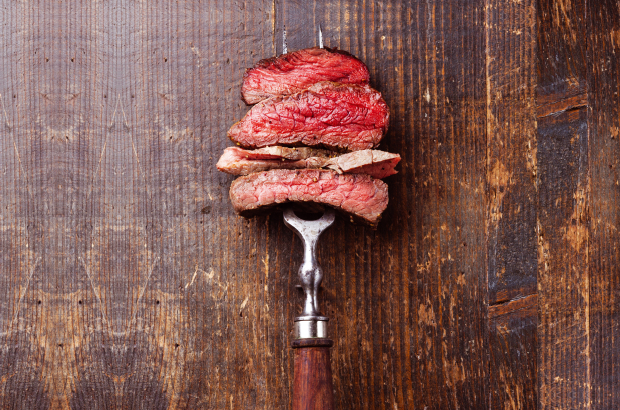- Daily & Weekly newsletters
- Buy & download The Bulletin
- Comment on our articles
Campaign aims to promote free-range Belgian beef abroad
With rolling green fields home to 1.2 million grazing cattle, Wallonia is rightly proud of its beef. The region is now promoting one of its best home-grown assets abroad.
The Belgian Beef, Tailor-Made Beef campaign, launched by the Wallonia Export Investment Agency (Awex) and its counterparts in Flanders, is also drawing attention to the eco-friendly, free-range farming methods in Wallonia as well as stringent hygiene and animal welfare conditions.
The dominant breed is the lean but muscular Belgian Blue, which accounts for more than 80% of livestock in the country. “For many reasons, the Belgian Blue is perfectly in line with consumer tastes in Belgium,” says Dominique Tourneur, Awex deputy general manager, Europe and Central Asia. “It’s quality beef, lean and tender with lots of nutritional benefits.” And it’s a firm favourite with locals who profess a nostalgic taste for the meat. In a blind test by Apaq-W, Wallonia’s agency for promoting quality agriculture, a majority of Walloons preferred it to Argentinian and Irish beef.
Now the qualities of Belgian Blue are now being promoted in the Middle East and Asia, as Awex and Apaq-W prepare to attend a series of major fairs in key countries to promote the breed. While meat consumption is dropping in Europe as people reduce the amount they eat, it is rising in other parts of the world, and though some countries in the Middle East require additional certification, Awex is authorised to sell Belgian Blue.
The breed’s particularity is what’s known as double muscling, an inherited condition that gives it its sturdy stature and high meat yield. While Belgians have a penchant for lean meat, it’s possible to produce marbled cuts that are becoming more popular among customers. Hence the title of the campaign, which also presents the nutritional advantages of meat as a source of protein and iron.
Wallonia is leading the way in responding to environmental concerns, too. “Livestock are largely raised on small family farms in a non-intensive way. This means the production of carbon dioxide is lower,” says Tourneur. The abundance of green spaces in the south of the region provides pasture land for the Belgian Blues, who are natural grazers, thereby maintaining biodiversity.
Belgium’s legislation on quality control is boosting the industry. Tourneur cites the rigorous work of AFSCA, Belgium’s federal agency for the safety of the food chain, on guaranteeing the traceability of meat in the region, and Wallonia’s agriculture minister, René Collin, for improving conditions for animals. But there’s a recognition that for Belgian beef to continue to be successful at home while conquering new markets abroad, the industry must evolve. Tourneur: “The sector needs to combine production methods that innovate and are respectful of the environment, while positioning itself as a high-quality product.”
Wagralim, the region’s agri-food competitive pole based at Gembloux, is focusing on that innovation. Among the projects it is financing are improving the fertility of herds and new ranges of feed for reproductive cows and to increase Omega 3 in meat. There are also plans to develop the organic sector.
This article was first published in the WaB magazine




















Comments
Animal Agriculture is one of the largest contributors to Climate Change, greenhouse gas emissions, soil erosion, and many other environmental problems. The claim that any form of animal agriculture is beneficial is disingenuous at best and an open lie at worst. On top of this exploited and killing animals when it has been proven to be completely unnecessary for human health is indefensibly enethical.